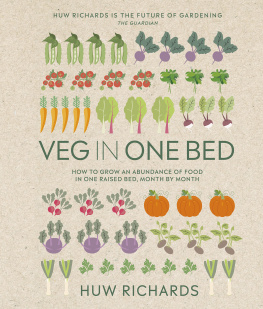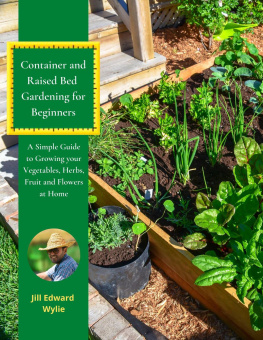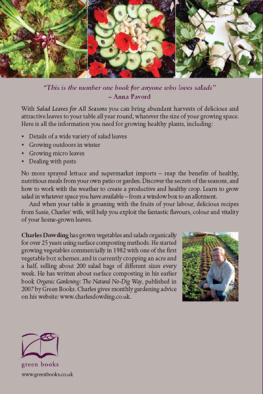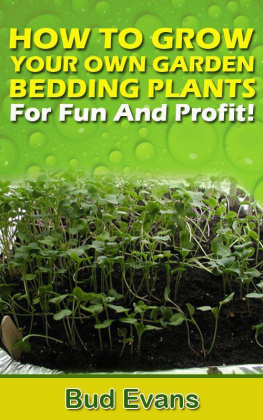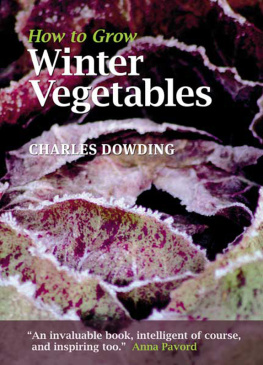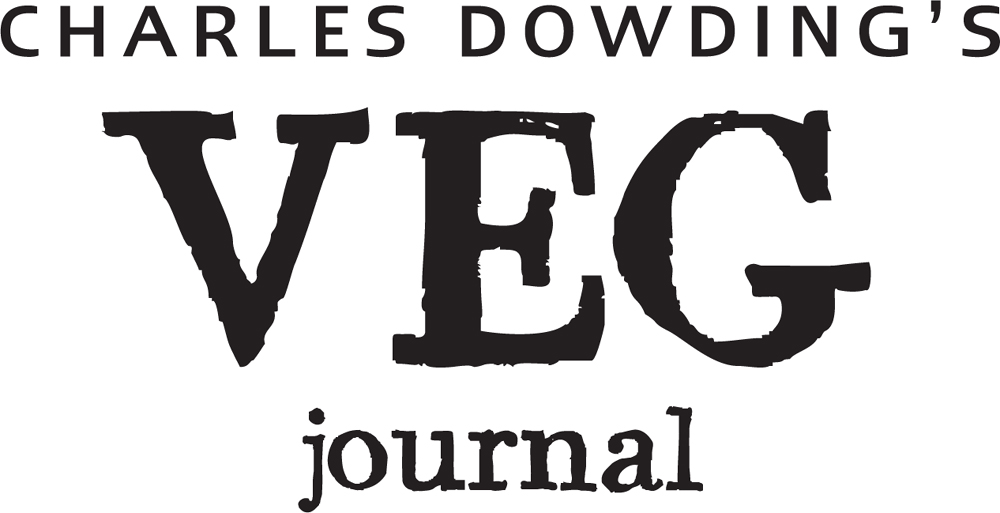EXPERT NO-DIG ADVICE, MONTH BY MONTH

First published in 2014
by Frances Lincoln Ltd, 7477 White Lion Street, London N1 9PF
www.franceslincoln.com
This eBook edition first published in 2014
Charles Dowdings Veg Journal
Copyright Frances Lincoln 2014
Text copyright Charles Dowding 2014
Photographs copyright Charles Dowding 2014
All rights reserved
This eBook is copyright material and must not be copied, reproduced, transferred, distributed, leased, licensed or publicly performed or used in any way except as specifically permitted in writing by the publishers, as allowed under the terms and conditions under which it was purchased or as strictly permitted by applicable copyright law. Any unauthorised distribution or use of this text may be a direct infringement of the authors and publishers rights, and those responsible may be liable in law accordingly
A catalogue record for this book is available from the British Library
eBook conversion by Quarto Publishing Group
Digital edition: 978-1-78101-167-6
Softcover edition: 978-0-7112-3526-7
Contents
Introduction
Gardening feels more fulfilling when the jobs that need doing are spread throughout the year and at their most effective time. Little and often has three marvellous results:
It becomes easier to keep on top of growth at peak times, when you can otherwise feel overwhelmed by many jobs arising as plants need tending, harvests are happening, weeds are growing and seeds want sowing.
You spend less time overall, because jobs are completed more quickly when tackled at the right moment. This particularly applies to weeding, when you save much time through dealing with small weeds instead of large ones.
The plot and garden look tidier and more beautiful, with an abundance of healthy growth.
To help you achieve this happy state, I will take you through a year of vegetable growing, covering the most important seasonal tasks, after explaining some important jobs that keep cropping up.
Teaching courses in my own and other gardens around the country has brought me into contact with many wonderful people, some of whom are new to gardening and some with a lifetimes experience. They all share a desire to discover easier and more productive ways of managing their plots and gardens, to enjoy more food with richer flavours and over a longer season, and to gain a better idea of what happens next, enabling harvests to continue through all seasons.
Many course participants offer tips of their own, which reminds me how much there is still to learn, even after three decades of experimenting with vegetables and growing large quantities for sale. Yet there is also a surprisingly simple way of growing your own food, once you get the hang of not digging and of sowing seeds in exactly their right season. Start well, allow yourself to wonder and enjoy the journey: this is the essence of what I have to teach.
No-dig success
My own situation is unusual in spanning the gap between domestic and market gardening. Although I produce a lot of vegetables, I do not feel at home with machinery and have managed to scale upwards from a few raised beds, doing everything by hand as though still in a small garden.
Key to success has been a no-dig approach, saving the time of digging and also of much weeding, because many fewer weeds grow on undisturbed soil. Fellow growers and all gardeners who continually battle to keep on top of weeds are intrigued by my soils cleanliness. Having fewer weeds means I can manage a larger garden and look after the soil more carefully.
Searching for a combination of economic viability and high quality of food has led me to try many ways of enhancing soil fertility. I find that growth and quality are improved by simply covering my beds with 2.55cm (12in) of compost over their surface, which means two-thirds of the total area each year (paths and beds sloping sides make up the other third).
Vegetables are hungry plants. Whatever their eventual size, we spend the same amount of time sowing, planting and weeding them, so it makes sense to maintain soil at a highly productive level.
This book is distilled from my experience of thirty bountiful years during which I have tried out many ways of maintaining soil, sowing seed, controlling weeds, watering plants and harvesting produce. It is a concentrated summary of all my successes and failures. Mistakes have been a particularly useful, if painful, help in establishing the possibilities for achieving more abundant harvests.
Keeping track of my many summer sowings.
JANUARY
JANUARY can be even more wintry than December, but there are often a few fine days to do jobs, even if they are not urgent. Winter is a time for getting ahead, and for generating plans and ideas for the season in situ, among your beds and plants as you do some gardening.
First principles
My advice is simple: disturb your soil as little as possible.
Soil preparation simplified
The usual recommendation is to dig or even double dig the soil for growing vegetables. Because this is repeated so many times, most gardeners accept the task without wondering if it is really necessary. In fact there is no need to dig at all, and my comparisons of growth on dug and undug soil in adjacent beds have revealed to me the temporary harm done by soil cultivation. Undug beds grow more abundantly in spring, while the dug soil is recovering from being dug, before it catches up in autumn. The dug beds have more weeds and are less easy to water because their clay surface tends to smear and cap. So my advice is simple: disturb your soil as little as possible, though sometimes you may have to, as when digging parsnips, planting trees and removing some large weeds. Initial clearance of weedy and grassy ground can mostly be achieved with mulches such as cardboard and compost, and some digging out of woody plants. Thereafter, keep the surface clean by looking for weeds, and pulling or hoeing them at all times a regular task that becomes easy once soil settles down to an undisturbed life.
Year-old compost is soft, crumbly and alive.
Friends in the soil
Soil is alive with helpful bacteria, fungi, worms, beetles etc., which appreciate being fed with composted organic matter on a regular basis. I spread 2.55cm (12in) on the surface of my beds every year, mostly as I clear plants in the late autumn. Surface compost weathers to a soft mulch over winter and can be directly sown or planted into.
Making and sourcing enough compost to spread on all beds every year is a worthwhile aim, because it increases harvests and also the ease of gardening. Think of it as feeding the soil, rather than feeding plants. The insoluble nutrients in organic matter on top of undug soil become accessible to plants through a proliferation of mycorrhizal fungi, and the compost mulch conserves moisture.



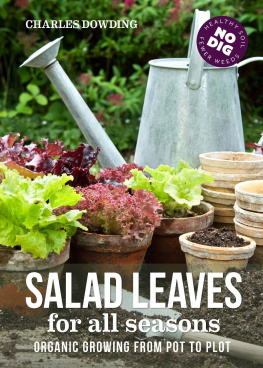

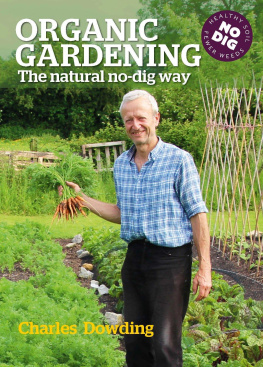
![Dowding - The Year-Round Vegetable Gardener’s Bible [7 Books in 1]](/uploads/posts/book/453239/thumbs/dowding-the-year-round-vegetable-gardener-s.jpg)
